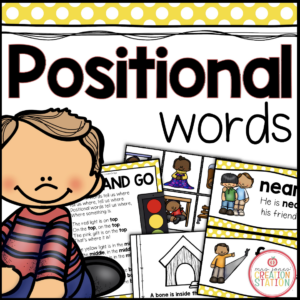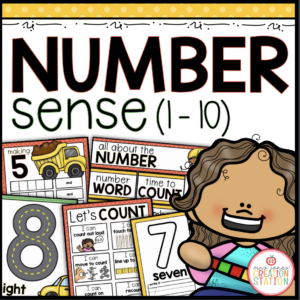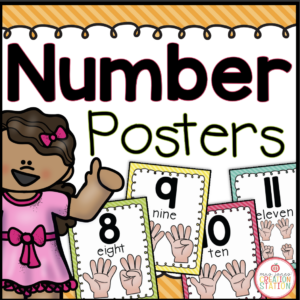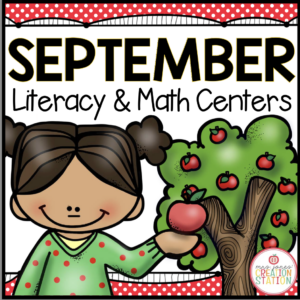Menu
These math pattern activities provide you a full week of hands on activities to get your students on track to learning all about patterns!
This pack includes whole group, small groups and independent resources that may be used for introducing, teaching, reviewing and assessing patterns. During this unit, lesson plans with 5 mini-lessons, 2 center activities and an interactive page is available for each week of instruction.
Buy the Math Pack for Little Learners and save!!!
____________________________________________________________________
THIS RESOURCE INCLUDES:
Lesson Plans:
At the beginning of the unit, follow these lesson plans or use the ideas to supplement your curriculum. There are 3 weeks or 15 lesson plan ideas covering patterns.
Patterns Poster:
First of all, print this patterns poster on a poster or simply print and laminate for your math wall. As a matter of fact, this poster shows the definition, vocabulary, examples and modeling of different patterns. In addition, use the blank poster throughout the unit and add to each section as you introduce it.
Vocabulary Cards:
Next, print the vocabulary cards (pattern, repeat, identify, extend, create, sequence) and introduce the definitions and sentences throughout the unit.
Interactive Pages:
After the lessons, complete an interactive page together each week. During the first week, have learners sort the pattern cards and non pattern cards. After that, learners may glue the patterns onto a notebook or page. After they glue, they will color a pattern and extend the pattern on the pull slip provided for continued practice. Last, learners may create a specific pattern sequence using the flipcards (print front and back).
Identify Patterns:
First, read aloud Lots and Lots of Zebra Stripes. Then, use the 5 mini-lessons provided to introduce patterns to your learners. Lessons include pattern walks, copying sound and movement patterns, read aloud activities, partner work and more.
Extend Patterns:
Then, read aloud Pattern FIsh. After the read aloud, use the 5 mini-lessons provided to help extend patterns with your learners. Lessons include read aloud activities, identifying pattern sequences, extending with pattern visuals, extending patterns with manipulatives and more.
Create Patterns:
Next, read aloud Teddy Bear Patterns. After the read aloud, use the 5 mini-lessons provided allow learners to create new patterns. In this unit, lessons include partner work, anchor charts for the pattern process, read aloud activities and more.
Pattern Sorts
For this center, students will use pattern cards to determine which card shows a pattern and which card doesn’t show a pattern.
Puzzle Patterns
In this center, students will match pattern cards to complete the puzzle piece.
Complete the Patter
In this next center, students will use shapes to complete the pattern.
What Comes Next?
In this center, students will analyze the pattern and choose the correct shape to make the pattern true.
Create the Pattern
For this center, students will study the pattern (ABBA, AABB, ABAB, etc) and complete the pattern using shapes.
Positional Words Math Activities
2D Geometric Shapes Math Activities
SaveSave
How can I see what is new in the MJCS store?
Be the first to know about new discounts, freebies, and new products. You can also subscribe to our newsletter to receive access to resources only available to MJCS subscribers, as well as, special offers and ideas!
How can I get credit for my TpT purchases?
Go to your account button at the top of the page. Under the “Buy” section, click “My Purchases “. Beside each purchase you’ll see a Provide Feedback button. Simply click the button and you will be taken to a page where you can give a quick rating and leave a comment for the product. Each time you give feedback, TpT gives you feedback credits that you use to lower the cost of your future purchases. Please leave detailed feedback for each resource, so we are able to create better resources for teachers and students.
How can I find a certain activity in a large PDF file?
If the resource you purchase has a variety of activities compiled into one PDF find the table of contents and click on the activity title. This should take you to that specific activity in the resource.
What can I do if I have a question about a resource?
If you have any questions regarded a resource before purchasing please email me at mrsjonescreationstation[at]gmail.com. Once you have purchased the resource you may use the “Product Q and A” tab on the product page to ask a question, as well.
How do I know if a resource has been updated?
Go to your account button at the top of the page. Under the “Buy” section, click “My Purchases “. Choose to “sort by: recently updated” to see what resources have been updated since you downloaded them last. You can download any updates from there. If a file has been updated, you will see a notification under the resource that says “Newly Updated – Download for Free!”
This item is a paid product created by Mrs. Jones’ Creation Station, Inc. Copying any part of this product, redistributing, selling or placing it on the internet in any form is strictly forbidden and is a violation of the Digital Millennium Copyright Act (DMCA). Thank you for respecting our work!
YES, YOU CAN…
NO, YOU CAN’T…
Click here for a detailed post with step-by-step directions.
You will need to download fonts specified in the resource and install it on your computer before downloading the editable file.
Install the most recent version of Adobe Reader onto your computer. If you have any problems editing, viewing or printing a file make sure your Adobe Reader is updated.
Now you can download the file to your computer. Once the file has downloaded open in Adobe Reader. You should be able to view the editable fields and the text should match the product description. If you have any problems editing the file, make sure you have followed the directions above and then contact me at mrsjonescreationstation[at]gmail.com




